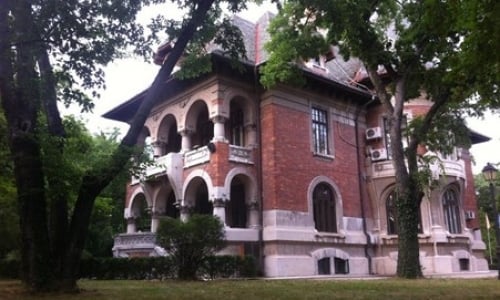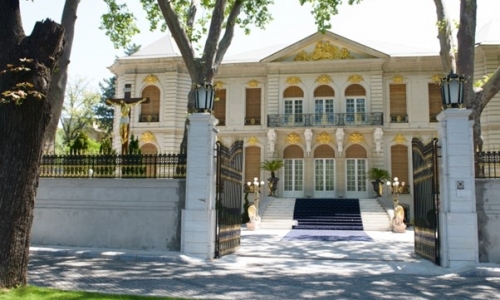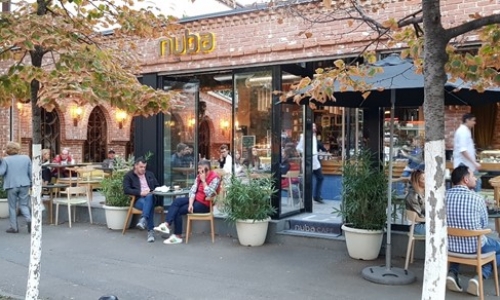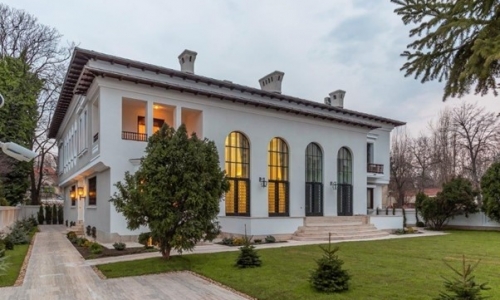Dorobanti
The area between Bulevardul Aviatorilor and Calea Dorobanți – the area of streets named after capital cities – is a real time travel in Bucharest today. The area between Bulevardul Aviatorilor and Calea Dorobanți – the area of streets named after capital cities – is a real time travel in Bucharest today. Built for the purpose of hosting mainly embassies and ambassadorial residences, the capital cities area has a special, lavish atmosphere.



History
The history of this area is related to that of the Filipescu family, who owned here a large domain, which included the lands of the entire neighborhood between Victoriei Square - Bulevardul Aviatorilor and Calea Dorobanţilor. After being leased, the domain was named Filipescu Park and hundreds of villas were built on it in the interwar period. Those who wanted to buy a lot in Filipescu Park to build had to follow some strict rules, including the height of the building, which should not exceed 13 meters. Following these rules, today we enjoy a neighborhood with wide streets and sidewalks and rich vegetation.
Calea Dorobanți, which delimits the Dorobanți – Capital cities area to the east, received this name after the War of Independence 1877-1878 and comes from the famous military troops who wore the famous feathered uniforms (dorobanț).
Monument houses in the area
Filipescu-Brâncoveanu House – located on Aleea Modrogan nr. 1, was built between 1908-1915 according to the plans of the architect Roger Bolomey. The sumptuous mansion is located in the center of a large garden, which also includes a building for the administrator, a stable (transformed into a garage), two pavilions and the porter’s house. Today it hosts the headquarters of the National Liberal Party.
The National Museum of Maps and Old Books – opened to the public in 2003, after the donation to the state of the collection of maps by the Daniela and Adrian Năstase family. The museum is housed in a 1920s building that was created in a style that combines Gothic and Mediterranean-inspired architectural elements The building is located on 39 London Street. The museum’s patrimony consists of over 1000 works made during the 16th – 20th centuries and represents both maps of the regions inhabited by Romanians and their ancestors and of the continents, astronomical maps and town plans.
Auschnit Palace is located on 1-3 Aleea Alexandru Street, intersection with Aviatorilor Boulevard. The Louis XIV-inspired house is a faithful copy of the Biron Palace in Paris (the Rodin Museum today), was built according to the plans of architect Grigore Cerchez and its construction was completed in 1915.
Zambaccian Museum is an art museum located on Zambaccian Museum Street no. 21A. It is located in the former house of Krikor Zambaccian (1889-1962), a Romanian businessman of Armenian ethnicity, reputed critic and art collector. The museum was founded in 1947, the exhibited pieces belonging to the impressive art collection donated by Krikor Zambaccian to the Romanian state, together with the building. Currently, the building is a branch of the National Museum of Art of Romania. The works of art on display include paintings, sculptures, graphics and furniture.
The Victor Babes Museum is located in a building built in the eclectic style specific to the 1920s, on 14A Andrei Muresanu Street. Originally built in order to be used as a private home, in a quiet neighborhood, today the building houses a collection dominated by the scientific works of Victor Babeș.
Ion Luca Caragiale National College is a monumental building, built between 1935-1936 and storeyed in 1939-1947. After 1989 it became a National College affiliated to UNESCO.



Relaxation facilities in the area
The cafes and bistros in the neighborhood are points of attraction for both business people and public figures who meet here. From cafés, sushi or restaurants with authentic cuisine that invite you on culinary journeys to other continents, the variety here is tempting. The locations are preferable for lunch breaks, meetings with friends or business partners. The social life in Dorobanti is always populated and lively.
In Dorobanti, the properties in the Nobileo Real Estate properties are luxury apartments and villas, with generous surfaces, top class finishes and maximum security. Whether they are villas with their own garden and yard or apartments with large terraces, they are distinguished by elegance and a high level of quality.
See our selection of properties: for sale and for rent
Villa for rent in Bucharest, Dorobanti Square
- 3.500€/ month
350.0 sqmb
Rooms: 6
Beds: 3
Baths: 5
- Villas
Bloc nou cu 4 apartamente I De inchiriat integral I Floreasca-Dorobanti
- 8.000€/ month
500.0 sqmb
Rooms: 12
Bed: 0
Bath: 0
- Apartments
Dorobanti | 3-room apartment | Excellent location
- 2.300€/ month
150.0 sqmb
Rooms: 3
Beds: 2
Baths: 2
- Apartments
French style 5-room apartment in villa | For rent | With terrace | Capitale
- 2.000€/ month
180.0 sqmb
Rooms: 3
Beds: 2
Baths: 3
- Apartments
Villa for rent in Bucharest, Dorobanti Area
- 3.000€/ month
200.0 sqmb
Rooms: 5
Beds: 3
Baths: 3
- Villas
Modern 2 room unfurnished apartment | For rent | Capital
- 2.500€/ month
92.0 sqmb
Rooms: 2
Bed: 1
Baths: 3
- Apartments
Modern 3 room unfurnished apartment | For rent | Capital
- 3.500€/ month
150.0 sqmb
Rooms: 3
Beds: 2
Baths: 3
- Apartments
Apartment for rent in Bucharest, Dorobanti area
- 3.500€/ month
210.0 sqmb
Rooms: 4
Beds: 3
Baths: 3
- Apartments
Penthouse for rent | Complex Washington Residence
- 4.000€/ month
260.0 sqmb
Rooms: 3
Beds: 2
Baths: 3
- Apartments












